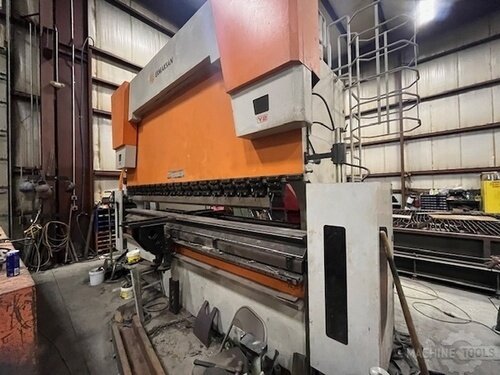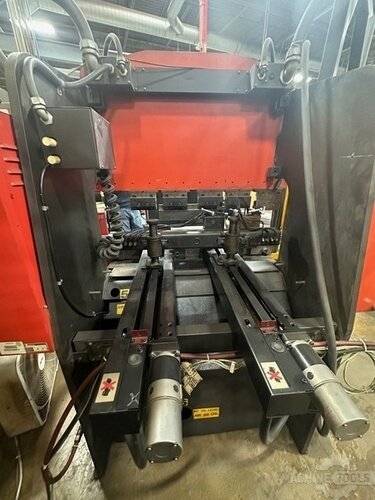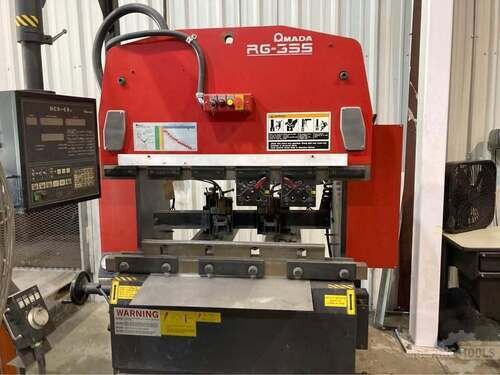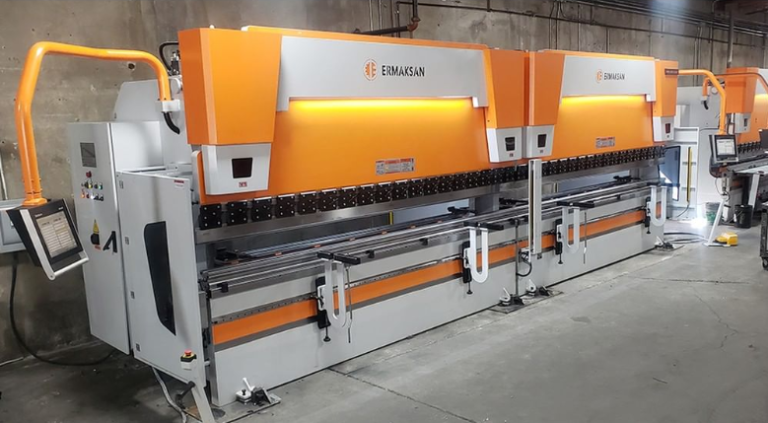Tandem Press Brakes Deliver Uptime; Section 179 Justifies Redundancy in Indiana
As President of Mac-Tech, I help manufacturers turn capital equipment choices into durable competitive advantages. Tandem press brakes are a strategic lever for uptime, throughput, and flexibility. When you combine that resilience with Section 179 expensing, Indiana shops can justify redundancy with confidence, knowing the tax benefit helps offset the upfront cost. My role is to guide you from business case to floor-ready execution, so your investment pays back in months, not years.
Tandem Press Brakes Convert Redundancy into Guaranteed Uptime and Scalable Capacity
A tandem configuration pairs two CNC press brakes that can run together as a single long-bed system or split apart to run two separate jobs. That means your forming department does not stall when you service one side, reconfigure tooling, or set up a different job. One machine keeps producing while the other is adjusted. The net effect is simple. You trade isolated downtime for continuous output.
Tandem also scales capacity on demand. When long parts or heavy sections are scheduled, you couple the brakes and synchronize them. When demand shifts to short parts or multiple SKUs, you decouple and run parallel. This protects quoted lead times and cushions you against hot-order spikes and staff constraints without adding a new shift.
Section 179 in Indiana Accelerates Payback and Justifies Redundant CapEx
Section 179 typically allows businesses to expense qualifying equipment in the year it is placed in service, subject to limits and your taxable income. For Indiana shops, that immediate write-off helps offset the cost of a tandem-capable system, which means the resilience of redundancy is far easier to approve. Bonus depreciation may also apply, which can improve cash flow even further.
State treatment can vary and your specific situation matters. Indiana generally conforms to federal rules in many areas, but you should confirm details with a CPA. The practical takeaway is consistent. When the tax code lets you accelerate deductions, the hurdle rate for uptime-centric investments falls. You get the operational benefit of redundancy and a faster after-tax payback.
HEAVY DUTY
TANDEM PRESS BRAKE
ROI Lens: Quantifying Avoided Downtime, Changeover Speed, and Long‑Part Throughput
Start with avoided downtime. If you currently lose 4 hours per month to brake maintenance or unplanned stops, at a loaded forming cost of 220 dollars per hour and a contribution margin of 350 dollars per productive hour, a tandem configuration that keeps one side running can protect up to 1,400 dollars in contribution per month. Over three years this often exceeds the premium for tandem capability.
Changeover time compounds daily. If tandem lets you set up one side while the other runs, and you save 20 minutes on eight changeovers per day, that is 2.7 hours regained. Even at a conservative 250 dollars per hour in value, that is about 675 dollars per day. Add long-part revenue capacity. When you couple the brakes, you take on work that a single shorter machine cannot handle, which wins jobs and reduces subcontracting. These three levers avoided downtime, faster changeovers, and long-part throughput are the core of the business case.
Operational Playbook: Synchronized Controls, Tooling Standards, and Facility Readiness
Success with tandem starts with controls. Look for CNC controls that support tandem synchronization, mirrored or independent backgauge modes, real-time angle correction, and offline programming with 3D bend simulation. The controller should let you switch between coupled and independent operation quickly, with electronic alignment and safety validation built in.
Standardize tooling across both sides. Use matched punch heights, consistent die openings, common crowning strategy, and the same clamp interfaces. This lets you mirror jobs, split lots, and avoid dead time locating odd tools. Build a setup library with validated bend data and gauge plans. On the facility side, verify floor loading, anchor points, crane coverage, electrical capacity, and interlocked safety zones. Accurate foundation and power are essential for long coupled beds to maintain straightness and repeatability across both rams.
Workforce Leverage: Automation, Offline Programming, and Safer Setups to Stretch Talent
Your best operators are scarce. Tandem helps them multiply output. Offline programming removes guesswork at the control and shifts prep work upstream, so operators run proven sequences. Angle measurement systems and adaptive bending reduce trial bends and scrap. Light curtains, area scanners, and safe speed modes enable safer setups without compromising productivity.
Automation options can extend run time. Robotic or cobot tending for repeatable parts enables unattended operation on one side while manual high-mix work runs on the other. Automatic tool clamping, quick-change punches and dies, and guided setup on the HMI cut changeover from minutes to seconds. The combination of tandem flexibility and right-sized automation lets you meet schedules with the team you have.
Mac‑Tech Partnership for Growth: Advanced Controls, IoT Monitoring, Financing, and Lifecycle Service
Mac-Tech brings a consultative approach from requirements definition through commissioning. We supply tandem-capable CNC press brakes with modern graphical controls, offline bend simulation, and network connectivity. For visibility, we support machine data collection and condition monitoring solutions so you can track OEE, alarms, and maintenance in real time, and we can assist with remote diagnostics to shorten service cycles.
Financing matters as much as horsepower. We help align Section 179 timing with financing structures such as fixed-rate loans, capital leases with one dollar buyout, or fair market value leases, often with deferred or seasonal payments to match your cash flow. After the sale, our lifecycle services include installation, training, preventive maintenance, emergency repair, and upgrade paths for tooling, safety, and software. My commitment is simple. We connect the technical solution to a financial plan and a support model that keeps you producing. If you want to discuss a tailored ROI scenario, reach me at joe@mac-tech.com or 414-477-8772.
FAQ
Can I run two different jobs at once on a tandem system?
- Yes. When decoupled, each side runs as an independent press brake with its own program, gauges, and tools. The controls manage separation and safety so you can parallelize production.
How does offline programming improve ROI for tandem brakes?
- It removes programming from the machine, reduces trial bends, and standardizes bend sequences. That shortens changeovers and increases the percentage of time the rams are forming parts.
Do I need new tooling for tandem operation?
- Not always. Many shops succeed by standardizing existing punches and dies, then filling gaps. Matching punch heights and clamp styles across both brakes is the biggest win.
How should I think about Section 179 for budgeting?
- Plan placement in service before year end, coordinate with your CPA to confirm limits and income eligibility, and align financing so payments and tax benefits hit the same fiscal window.
What facility checks are critical before installation?
- Confirm floor loading and level, anchor locations, electrical capacity and disconnects, crane coverage for long parts, and safety zone layout. A pre-install site survey avoids delays.
Can Mac-Tech integrate robots with a tandem press brake?
- Yes. We support robotic or cobot tending solutions for suitable parts, with guarding and interfaces that coordinate with the brake controls for safe, efficient handoffs.
- How do I monitor uptime and plan maintenance?
- We support connectivity to collect run time, cycle counts, and alarms, which feed dashboards for OEE and predictive maintenance. This data helps time service on one side while the other runs.
Get Weekly Mac-Tech News & Updates








